Depart USA

Day 1 | Depart USA
Our journey begins with an overnight flight to Istanbul, Turkey.
Istanbul
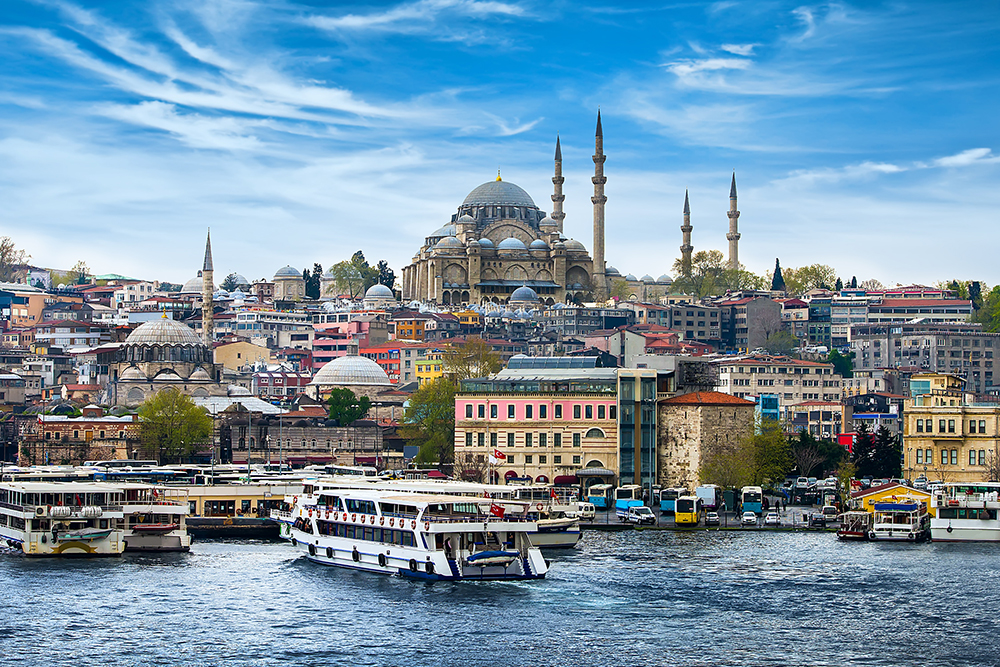
Day 2 | Istanbul
We arrive in the ancient city of Istanbul (known historically as Byzantium and then Constantinople) where East meets West as Asia and Europe literally come together. Istanbul is an important place of pilgrimage as it is home to some of the world’s richest display of culture and art, much of which was created in the name of faith. Today we’ll enjoy a half-day tour of the city to visit the Spice Market and the Chora Museum, considered one of the world’s most beautiful examples of a Byzantine church (closed on Wednesdays). The church was converted into a mosque by the Ottoman rulers; then it became a museum in 1948 with its interior covered with fine mosaics and frescoes. Time permitting, we’ll visit other mosques in Istanbul (Mosques are Muslim places of worship and prayer. The word “mosque” comes from the Arabic masjid, which is related to the word for “prostration.” Muslims are expected to pray five times a day, preferably in a mosque: morning, midday, afternoon, sunset, and evening.), including the Süleymaniye Mosque (second largest mosque in the city, and one of the best-known sights of Istanbul) and the Eyup Mosque. We can also dive into the Grand Bazaar (closed on Sundays), a market of over 4,000 tiny shops, where bartering for a good deal is essential. Tonight we’ll check into our hotel where we’ll enjoy dinner and an overnight stay in Istanbul.
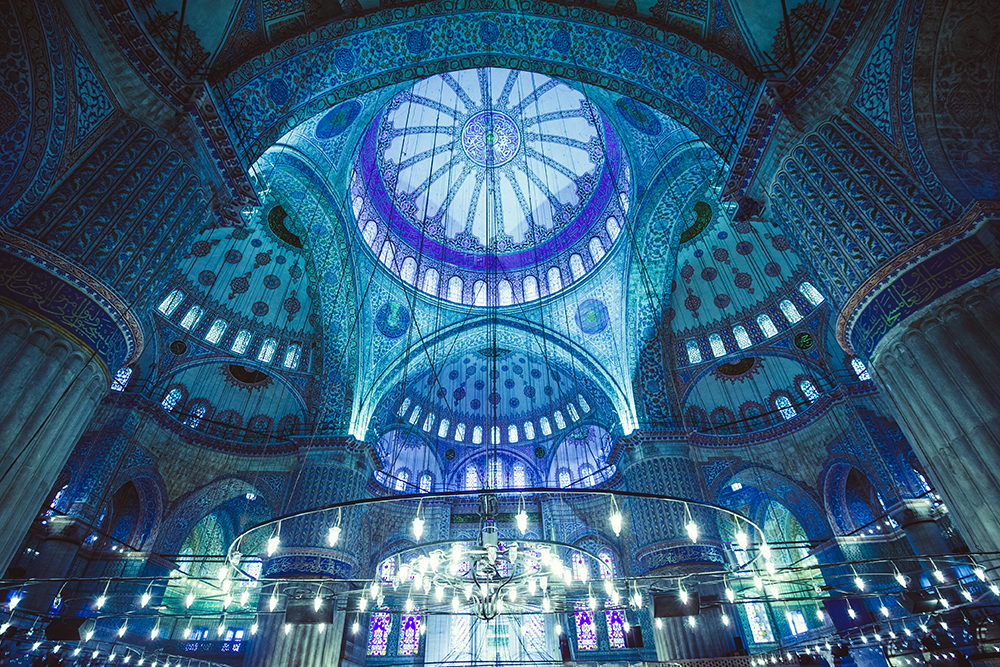
Day 3 | Istanbul
There is much to see in Turkey’s largest city (and undeniably its cultural, spiritual and economic hub). Istanbul is called “The City of Seven Hills” (like Rome!) because its oldest part is alleged to have been built on seven hills. Our tour today includes the Hippodrome of Constantinople which had a capacity to accommodate more than 100,000 spectators for sporting events such as the quadriga chariot races during the Roman and Byzantine periods, and the magnificent Topkapi Palace (closed on Tuesdays), home to the Ottoman Sultans for approximately 400 years (1465-1856) of their 624-year reign. The palace is a major tourist attraction containing the most holy relics of the Muslim world including the Prophet Muhammed’s cloak and sword, and some twelve thousand pieces of fine Chinese porcelain. We will also get to visit the incredible Istanbul Archaeology Museum (closed on Mondays), which actually consists of three museums: 1) Archaeological Museum (main building), 2) Museum of Ancient Orient, and 3) Museum of Islamic Art. The Museum was founded by decree (as the Imperial Museum in 1891) and it sits in the outer gardens of the Palace. Housed in this remarkable facility are over one million objects representing almost all of the eras and civilizations in world history. The sight of cascading domes and the six minarets of the Blue Mosque, built in 1609 by Sultan Ahmet, will thrill us. These still dominate the skyline of Istanbul and the interior walls are covered with twenty thousand blue iznik tiles. We’ll also visit the Church of the Holy Wisdom, known as Hagia Sophia (closed on Mondays), a former Byzantine church and Ottoman mosque, today a museum, and universally acknowledged as one of the great buildings of the world. Unfortunately nothing remains of the original Hagia Sophia, built on this site in the 4th century by Constantine the Great, the first Christian emperor and founder of the city of Constantinople, which he called “the New Rome.” After a full day, we’ll enjoy dinner and our second overnight stay in Istanbul, the “New Rome.”
Antakya
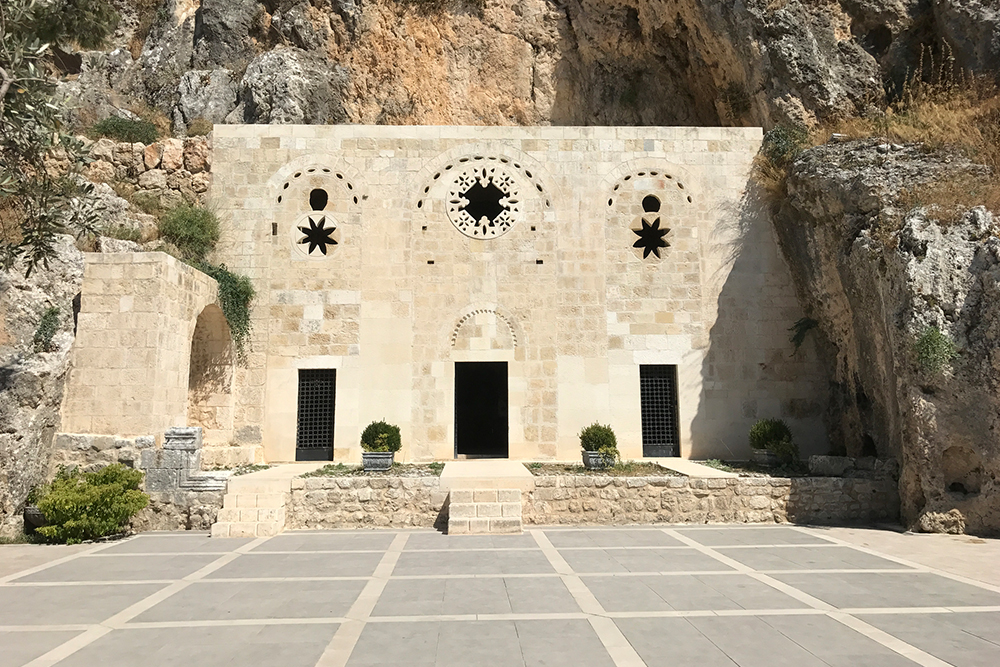
Day 4 | Antakya & Adana
This morning we transfer to the airport for our flight to Antakya departing from Istanbul. Upon arrival to Hatay Airport, we drive to Antakya, known anciently as Antioch. The city is renowned for its delicious hot and spicy cuisine including its Turkish kebab and coffee. Antakya has historical significance for Christians because it was the place where the followers of Jesus Christ were first called Christians. With its massive walls, it also played an important role during the Crusades. Today we’ll see the Grotto or Cave Church of St. Peter, which is widely believed to have been carved into the mountainside of Mount Starius by the Apostle Peter himself as a place for the early Christian community of Antioch to meet (thus it is alleged to be the very first Christian church). Only some pieces of floor mosaics and traces of frescoes on the right side of the altar have been preserved from the early period of the church. It is thought that the tunnel inside which opens to the mountain side served as an escape in case of sudden raids and attacks. Water that seeps from the nearby rocks was gathered inside for drinking purposes, and was also used for baptisms. The collection of water, which visitors drank and collected to give to those who were ill (with the belief that it was healing and curative), has lessened as a result of recent earthquakes. We’ll also visit the mosaic museum (closed on Mondays), the works in the museum including statues, mosaics, jewelry and other artifacts, are exhibited in 7 rooms and 2 halls and arranged according to where they were found) and the church at Seleucia Pieria which was originally built in the late 400s and occupied a prominent position near the main colonnaded street leading to the harbor. Then, we will head to Adana, Situated in a stretch of flat, fertile land (among the most agriculturally productive in the world), this city’s history goes back more than 3,000 years. After all the activities of the day, we’ll look forward to a delicious dinner and overnight stay in Adana.
Cappadocia

Day 5 | Tarsus & Cappadocia
With a history going back over 2,000 years, Tarsus has long been an important stop for traders and travelers, and a focal point of many civilizations. During the Roman Empire, Tarsus was the scene of the first meeting between Mark Antony and Cleopatra. Owing to the city’s religious importance, many Christian martyrs were put to death here. Tarsus was also the birthplace of the Apostle Paul. Today in Tarsus, we will explore Paul’s Gates, Paul’s well and house, and the Ulu Cami Mosque (Seth’s tomb), after which we’ll make our way to Cappadocia to see the underground city of Kaymakli which was carved during the early Christian era. The houses are constructed around nearly one hundred tunnels which are still used today as storage areas, stables, and cellars. The underground city at Kaymaklı has tunnels that are lower, narrower, and more steeply inclined than others in the area. Of the four floors open to tourists, each space is organized around ventilation shafts. The day’s final destination is Cappadocia where we enjoy dinner and an overnight stay.
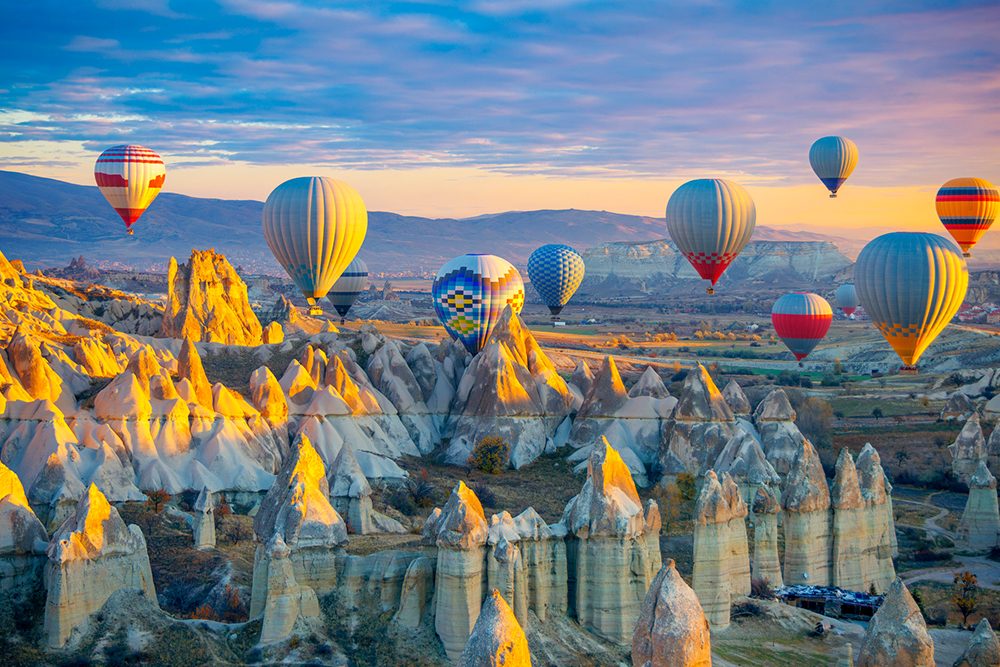
Day 6 | Cappadocia
The exceptional natural and cultural wonders of the region of Cappadocia will astonish us. Rocks in this area have eroded into hundreds of spectacular pillars and minaret-like forms called fairy chimneys (also called “hoodoos” – that protrude from the bottom of an arid drainage basin or badland). Such rocks, made of volcanic deposits, are soft and the people of the Cappadocia Region villages carved them out to form houses, churches and monasteries. Today we’ll explore the natural and manmade wonders of Cappadocia, including a visit to the underground city of Derinkuyu, the monastic communities of Göreme (a complex of more than 30 rock-carved churches and chapels, some with superb frescoes inside dating from the 9th to the 11th centuries), and the ruins of Zelve, an area with the highest concentration of fairy chimneys with particularly sharp points and thick trunks. It is not known exactly when people of this region began living in the dwellings carved into the rock. What is known is that an important Christian community lived in the area. Finally, we travel to the old city of Avanos which overlooks the longest river of Turkey and whose name in ancient times was Venessa. Avanos is famous for its production of earthenware pottery and a flourishing ceramic trade dating back to the Hittites. This evening, we will return to our hotel in Cappadocia and enjoy dinner and an overnight stay.
Pamukkale
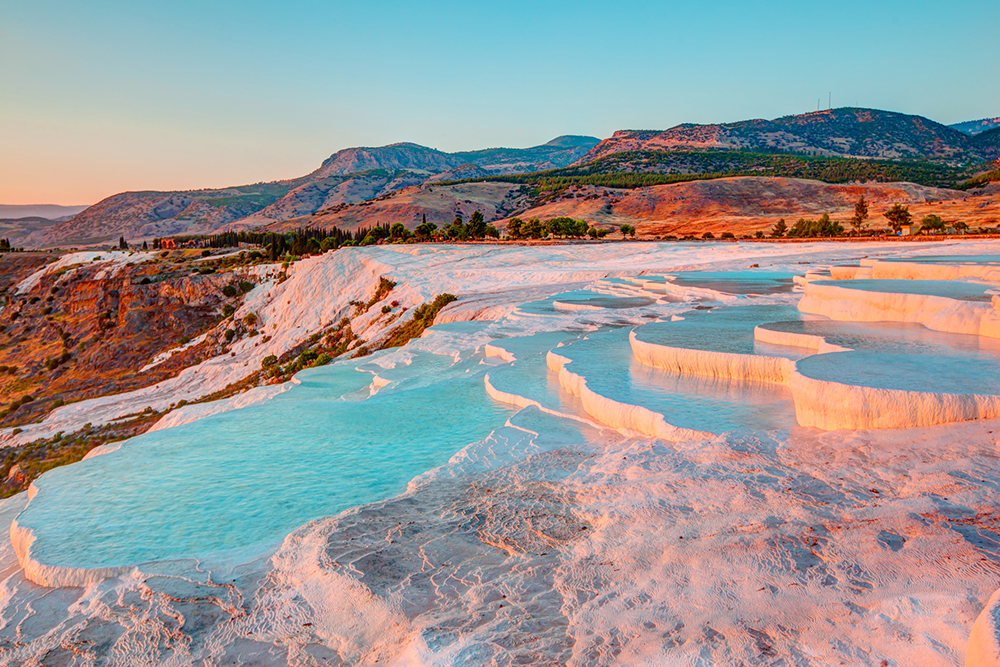
Day 7 | Antioch of Pisidia & Pamukkale
This morning, we will check out of our hotel in Cappadocia and head to Pamukkale. On our way, we will stop at the modern day city of Yalvaç to see the ancient ruins of Antioch of Pisidia. Paul the Apostle frequented this city on his missionary trips, making Antioch a major center of early Christianity in Antolia. After a long day of driving, we will arrive at our hotel in Pamukkale for dinner and an overnight stay.
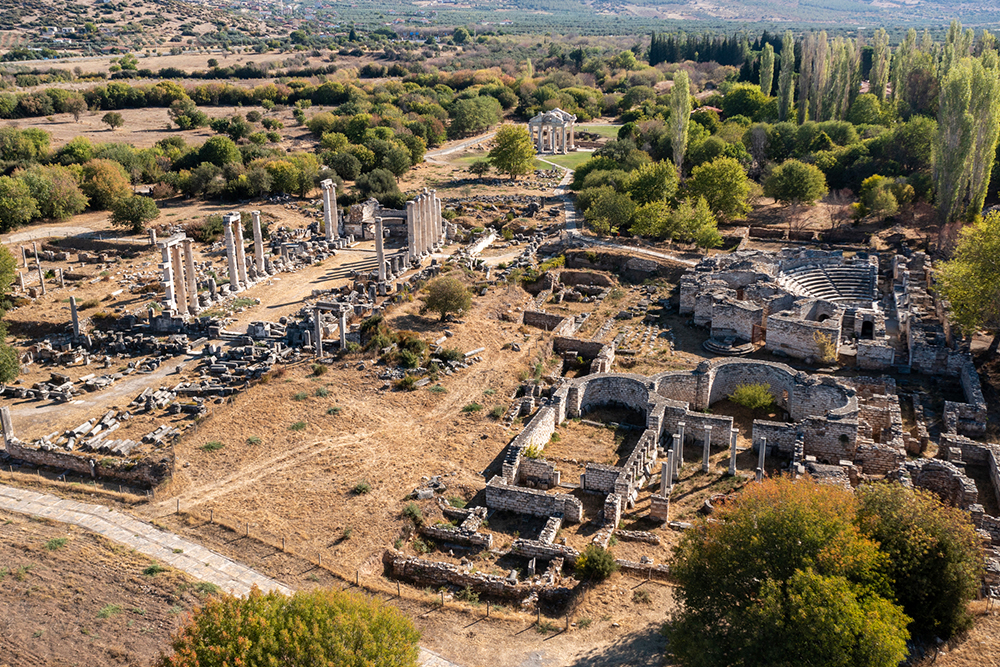
Day 8 | Aphrodisias, Laodicea & Pamukkale
Known very anciently as the “Great City” and the “City of the Cross,” Aphrodisias (a city ultimately named after Aphrodite, the Greek goddess of love!) is the day’s first destination. The city was built near a marble quarry; hence marble sculptures from Aphrodisias became famous throughout the Roman world and the Aphrodisian sculptors became renowned as they benefited from a plentiful supply of marble close by. The school of sculpture at Aphrodisias was very productive; much of their work can be seen around the site and in the museum. Today we’ll see the impressive Aphrodisian ruins including the stadium, which is said to be one of the best preserved of its kind in the Mediterranean world. It was used for athletic events until the theatre was badly damaged by a 7th century earthquake. Here a frieze assumed to depict Britain subjugated by Rome was discovered in 1980 showing a helmeted female warrior labeled BRITANNIA writhing in agony under the knee of a Roman soldier with the inscription TIBERIUS CLAUDIUS CAESAR below it. Later, en route to Pamukkale (meaning “cotton castle” as the city contains hot springs and white terraces of carbonate minerals left by the flowing water), we’ll see Laodicea, one of the Seven Churches which was chastised for being lukewarm. Archeological remains near Laodicea still attest to its former greatness as evidenced by the relatively well preserved stadium, gymnasium, and theatres (one of which is in a state of great preservation, with its seats still perfectly horizontal, though merely laid upon the gravel). Before returning to our hotel, we’ll stop at the ruins in Hierapolis (another famous site of hot springs) where Paul brought Christianity (Colossians 4:13). Perhaps we will have opportunity to rest in one of its thermal pools before our dinner and our overnight stay in Pamukkale.
Izmir
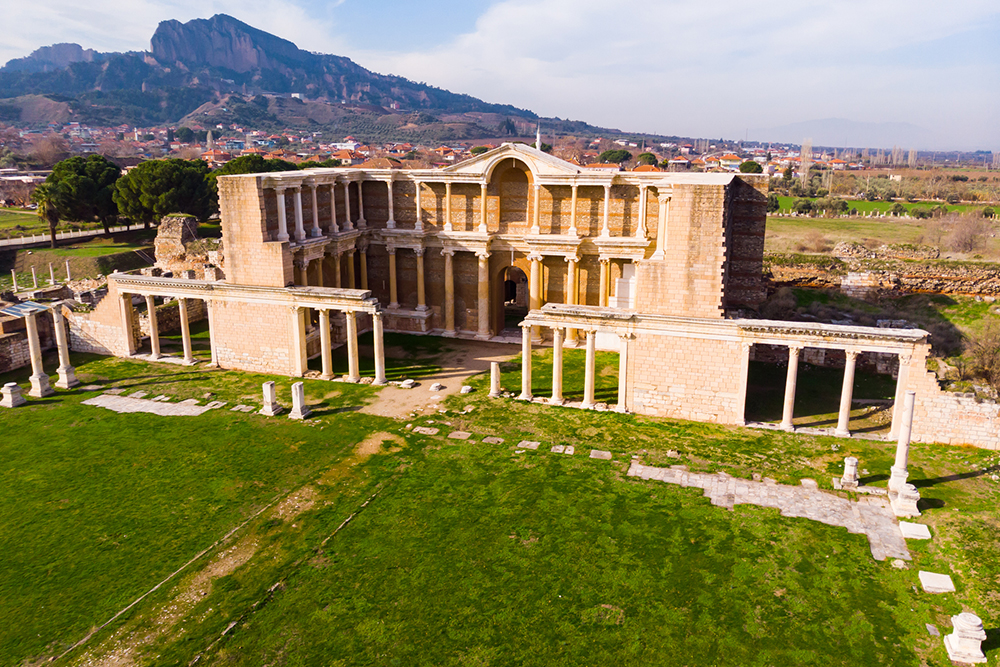
Day 9 | Philadelphia, Sardis & Izmir
Today, we begin in Philadelphia (Alasehir), another of the Seven Churches of Revelation, to see its several mosques and ancient Christian churches including the remains of a Byzantine basilica built of brick with 11th century frescoes. Next, is Sardis, an ancient city whose importance was threefold: first to its military strength, secondly to its situation on an important highway leading from the interior to the Aegean coast, and thirdly to its commanding the wide and fertile plain of the Hermus. As important as Sardis may have been, the city was berated by John for its facade of strength and its notoriously soft and fainthearted population (Rev. 3:1-6). In Sardis, we’ll explore the massive Temple of Artemis, the white marble royal road, the impressive gymnasium, and the synagogue, where, since 1958, both Harvard and Cornell Universities have sponsored annual archeological expeditions. These excavations unearthed perhaps the most impressive synagogue in the western Diaspora yet discovered from antiquity, yielding over eighty Greek and seven Hebrew inscriptions as well as numerous mosaic floors. This evening we will check into our hotel in Izmir and enjoy our dinner and overnight stay.
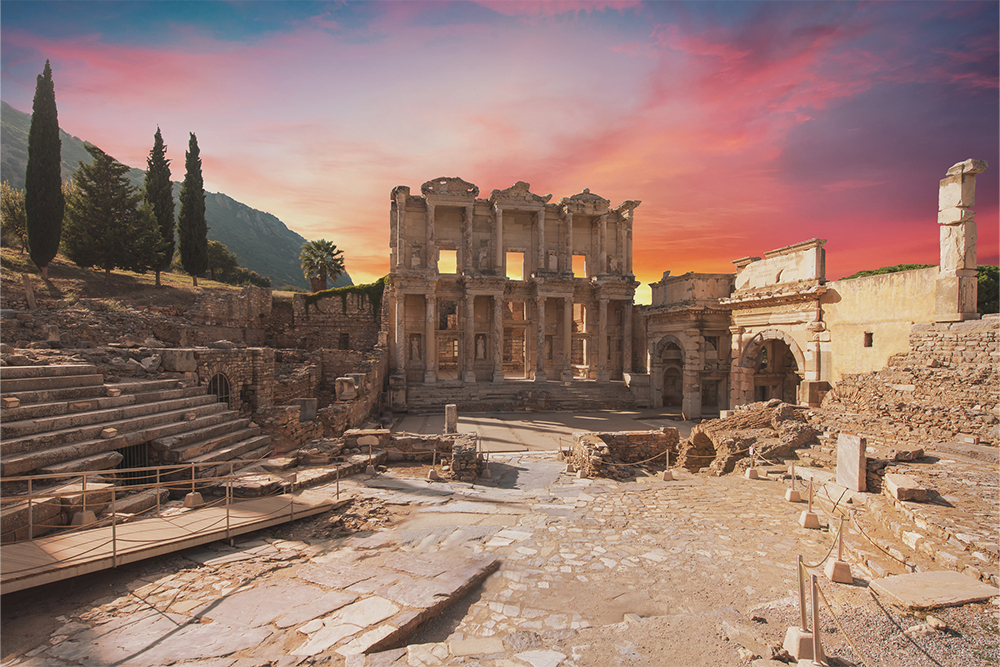
Day 10 | Ephesus, Miletus, Didyma & Izmir
This morning we travel to the ancient city of Ephesus one of the Seven Churches in Revelation (Rev. 1:11), and for many years the second largest city of the Roman Empire ranking second only to Rome. While in Ephesus, we’ll look with wonder on its many historically rich sights including the Temple of Artemis (Diana), the fountain of Trajan, the Baths of Scolastika, the Temple of Hadrian, the Library of Celsus and the Great Theatre capable of holding 25,000 spectators (used initially for drama, but during later Roman times for gladiatorial combats) where Paul preached and where the riot of the silversmiths occurred. We will walk along Arcadian Way where Mark Anthony and Cleopatra once rode in procession. Next, we will visit the ancient ruins at Miletus. This city is the birthplace of the Hagia Sophia’s architect (and inventor of the flying buttress) Isidore of Miletus. Lastly, we’ll visit the ruins at Didyma, the most renowned oracle of the Hellenic world next to Delphi and first mentioned among the Greeks in the Homeric Hymn to Apollo. This evening, we will return to our hotel in Izmir for our dinner and overnight.
Assos
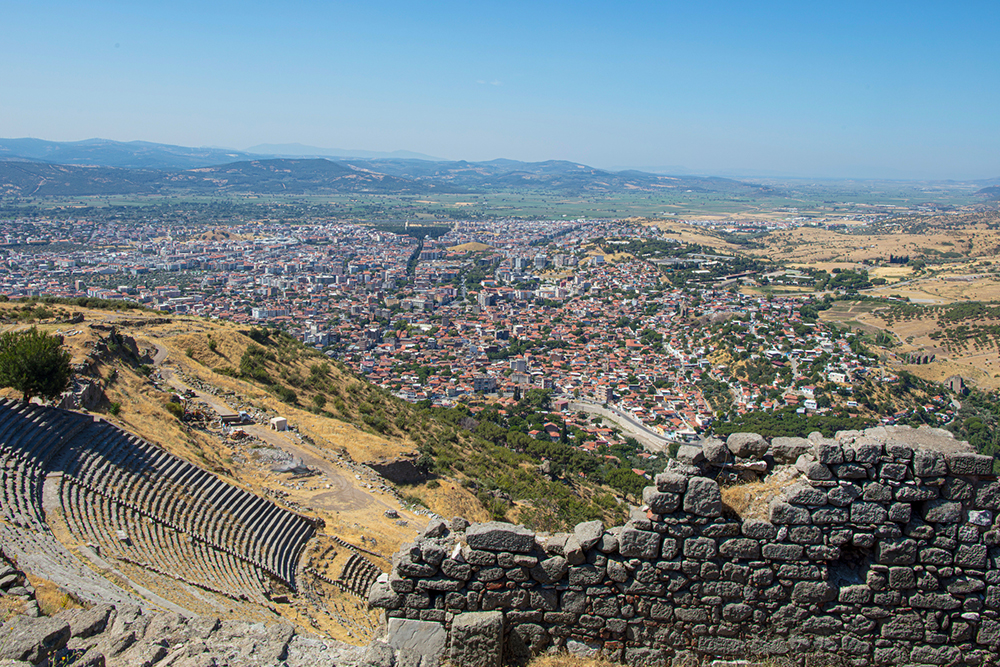
Day 11 | Izmir, Thyatira, Pergamum (Pergamon), & Çanakkale
Today, we will begin at the ancient ruins in Izmir (Smyrna), rich in history and also one of the Seven Churches of Revelation. Next, we are off to visit the ruins at Thyatira. Paul and Silas might have visited Thyatira during Paul’s second or third journey, although the evidence is entirely circumstantial as they visited several small unnamed towns in the general vicinity during the second journey. Lastly, we will head to Pergamum, an ancient Greek city and one of the Seven Churches (“Churches” in this context refers to the community of Christians living in each city, and not merely to the building or buildings in which they gathered for worship). Here we’ll explore the Archeological Museum (The Great Altar of Pergamon is in the Pergamon Museum. The base of this altar remains on the upper part of the Acropolis. It was this altar, believed to have been dedicated to Zeus, that John of Patmos referred to as “Satan’s Throne” in the above-referenced scripture.), the Red Church (the great temple of the Egyptian gods Isis, known today as the “Red Basilica, and consisting of a main building and two round towers within an enormous sacred area, was, in the first century AD – the Christian Church at Pergamon), the Acropolis (consisting of an upper and lower Acropolis and numerous structures) and the Sanctuary of Asclepieion (where people with health problems could bathe in the waters of a sacred spring; many gifts and dedications have been found on site such as small terracotta body parts, no doubt representing what had been healed). This evening, we will drive to Assos for dinner and overnight.
Istanbul

Day 12 | Alexandria Troas & Troy
This morning, we will check out of our hotel in Canakkale and drive to Alexandria Troas, an ancient city situated on the Aegean Sea and visited at least twice by Paul, and we’ll see Troy, an ancient city, both factual and legendary and best known for being the focus of the Trojan War described in the Iliad (one of two epic poems attributed to Homer). After an unforgettable journey, we will find ourselves back in Istanbul (flight Izmir to Istanbul) for a farewell dinner and our last overnight stay.
Depart for home

Day 13 | Depart for home
Today marks the end of our journey. We’ll transfer to the airport for our flight back home.
